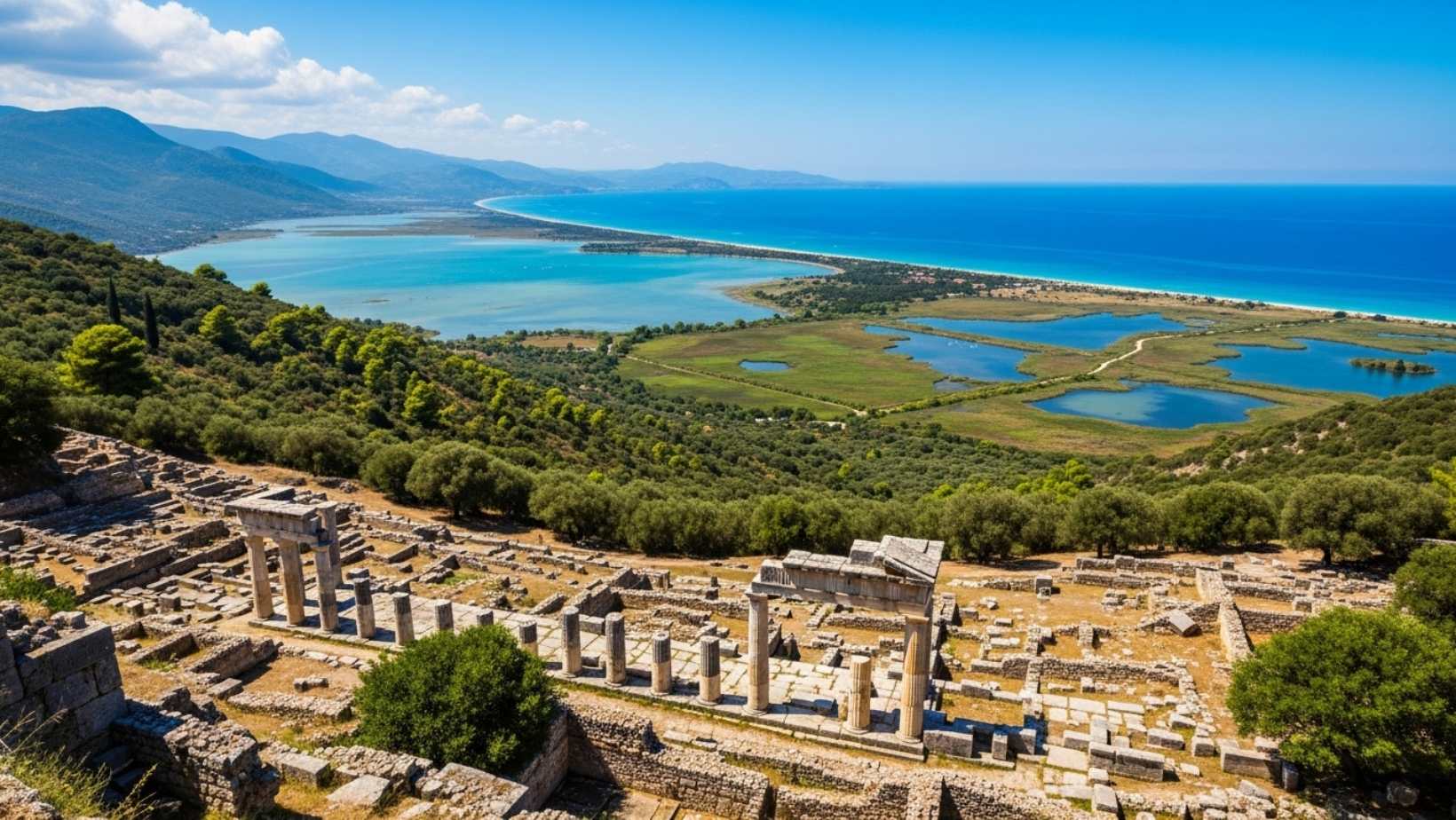Most Mediterranean travelers chase overcrowded Italian coastlines while missing one of archaeology’s greatest secrets. Where else can you stand among Greek theaters, Roman baths, Byzantine basilicas, and Venetian fortifications—all within walking distance—while turquoise waters lap against empty beaches just beyond ancient walls?
This Albanian archaeological park preserves 2,500 years of continuous human habitation across civilizations that shaped Western culture. The site’s position between freshwater wetlands and the Ionian Sea created a natural fortress that attracted settlers from Homer’s era through Napoleon’s campaigns. Unlike Italy’s tourist-packed ruins charging €25+ entry fees, this location welcomes curious travelers for a fraction of the cost.
What makes this destination extraordinary isn’t just its historical significance—it’s how nature and antiquity intertwine. Flamingos wade through marshes where ancient merchant ships once docked. Sea turtles nest on beaches overlooked by crumbling Byzantine walls. The air smells of wild oregano and salt water, exactly as it did when Mediterranean villages first took root here.
You’ll walk through four empires without leaving the archaeological zone
Butrint’s layered ruins tell stories that history books can only hint at. The Greek theater, carved into hillside limestone around 300 BCE, still hosts occasional performances under Mediterranean stars. I watched a local theater troupe perform Euripides there last summer—the acoustics remain perfect after 2,300 years.
The Roman baths complex showcases engineering genius that modern architects study. Intricate mosaic floors depict animals and geometric patterns using thousands of colored stones. When afternoon light filters through ancient doorways, these mosaics seem to shimmer as if freshly laid.
Byzantine Christians built their baptistery directly atop pagan foundations, creating architectural palimpsests you can literally touch. The baptistery’s circular design and intact mosaics make it one of Albania’s most photographed structures. Venetian fortifications crown the highest points, offering panoramic views across wetlands toward Corfu’s distant mountains.
The wetlands ecosystem rivals any nature reserve in southern Europe
Butrint National Park encompasses 9,400 hectares of protected wetlands teeming with biodiversity. Over 246 bird species migrate through these marshes annually, including endangered Dalmatian pelicans and glossy ibises. I’ve spotted wild boar tracks along forest trails and watched otters fishing in channels that once served as ancient shipping lanes.
Lake Butrint connects to the Vivari Channel, creating brackish waters that support unique marine life. Local fishermen still use traditional methods their grandfathers taught them, casting nets from wooden boats at dawn. The fish they catch—sea bass, mullet, and bream—taste incomparably fresh at waterfront tavernas charging €8 for grilled platters that would cost €35 in Positano.
The microclimate here differs noticeably from Albania’s interior. Sea breezes keep summer temperatures comfortable while the surrounding mountains trap moisture, creating lush vegetation. Wild pomegranates and figs grow among ruins, free for picking. This natural abundance explains why civilizations kept rebuilding here despite earthquakes and invasions.
Shakespeare knew about this place when most Europeans had forgotten it
Literary historians debate whether Shakespeare ever visited Albania, but “Twelfth Night” explicitly references Butrint as a significant location. During the 16th century, when the Bard wrote his comedy, European scholars still recognized this site’s historical importance. Venetian cartographers mapped it meticulously, understanding its strategic position controlling Adriatic-Ionian sea routes.
Modern archaeological work began seriously in the 1920s under Italian excavation teams. They uncovered the Greek theater and Roman forum, but UNESCO designation in 1992 sparked systematic preservation efforts. Today’s visitors can explore areas that remained buried for centuries, including a recently opened Roman villa with intact frescoes.
The site receives roughly 60,000 annual visitors compared to Pompeii’s 4 million—meaning you’ll often have entire sections to yourself. I spent three hours photographing the Lion Gate without another tourist appearing. That solitude among such profound history creates meditation-like experiences impossible at Italy’s overcrowded archaeological destinations.
The nearby village of Ksamil offers pristine beaches with Caribbean-blue waters and white sand. Four small islands sit just offshore, reachable by swimming or renting kayaks for €5. Beachfront guesthouses charge €25-40 nightly, including breakfast with homemade byrek and strong Albanian coffee. The contrast between ancient ruins and modern beach culture creates a travel experience that sophisticated travelers increasingly seek—authenticity without crowds, history without commercialization.
